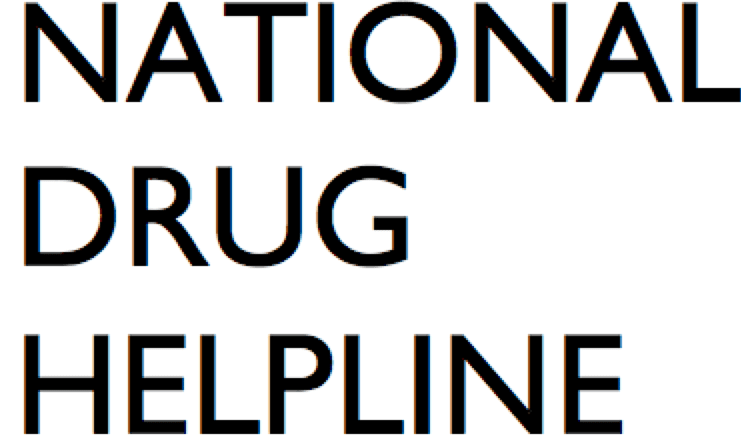If you live in Nevada, you may or may not be aware of the state’s problems with drugs and alcohol. But if you or a loved one has been prey to any kind of addiction, you probably know how difficult it can be to get help at an addiction treatment center in NV. An alcohol and drug hotline can help you find affordable drug rehab facilities in Nevada, so that you or a loved one can start recovery without delay. There are dozens of effective addiction treatment programs available in Nevada, and getting in touch with them is an important first step to avoid the serious consequences of substance abuse.
Drugs and alcohol are a pressing public health concern in Nevada. In 2010, the state ranked among the top 10 in the US in several categories, including past-month use of illicit drugs among teenagers and past-year use of prescription opioid pain relievers for non-medical use by teenagers. In 2009, drug-induced deaths in Nevada were higher than the national average for the US overall. Stimulants such as methamphetamines are the most commonly listed drugs at treatment admissions in the state. [1]
With this article, we aim to give you a better understanding of the scale of the alcohol and drug problems in Nevada. We will present some information and statistics that will help you get a better picture of the significant trends and major issues involving addiction in NV.
Drug and Alcohol Abuse in Nevada: Demographics and Overview
Nevada, the Silver State, has a population of around 3 million, with a land area of 110,000 square miles. This makes Nevada the 7th largest in size and the 32nd in terms of population in the US. Interestingly, 73% of the state’s residents live in the Clark County region. Esmerelda County is the least populated, with less than 1% of Nevada’s population living here (under 1,000 persons).
Based on the National Survey on Drug Use and Health (NSDUH) in 2018–2019, 1 in 3 adults in Nevada between the ages of 18 and 25 reported using illicit drugs in the past month. There are more drug-induced deaths each year in Nevada than from either motor vehicle accidents or firearms. Drug-related deaths in the state are higher than the national average. The primary drugs of concern include stimulants like methamphetamines, marijuana, alcohol, and opioids, based on drug treatment admissions in Nevada.
In 2016, there were more than 100 certified substance-abuse treatment programs in Nevada. However, one of the challenges the state faces is that addiction treatment services are not well known in communities. Online directories are not always up to date, and even when people are aware of drug rehab services, they have difficulty navigating through the system to find them. [2]A drug and alcohol hotline can make it a lot easier to find addiction treatment in Nevada. The hotline connects callers to effective and affordable drug rehab programs nearby and provides up-to-date information on resources in the community.
Alcohol Abuse in Nevada
The NSDUH 2018–2019 survey reported that 56% of adults in Nevada (aged 18+) had used alcohol in the past month. This is not very different from the national average for the US at 55%. Similarly, binge alcohol use in Nevada also reflects national trends, with 1 in 4 adults over the age of 18 reporting binge drinking in the past month (binge drinking is defined as 4 or more drinks within 2 hours for women, and 5 or more drinks within 2 hours for men).
Experts agree that harmful drinking patterns such as heavy alcohol use and binge drinking predispose a person to developing alcohol addiction. Interestingly, only around 45% of people surveyed in Nevada reported a perception of great risk from binge drinking.
Opioid Addiction in Nevada
The United States is going through an opioid crisis. In 2018, there were more than 46,000 opioid overdose deaths nationwide, representing nearly 70% of all drug overdose deaths. In Nevada, there were just under 375 overdose deaths involving opioids, representing around 11% of all overdose deaths.
In 2018, deaths involving prescription opioid painkillers such as OxyContin and Vicodin in 2018 declined from the previous year (7.2% versus 8.7%). Deaths related to heroin and synthetic opioids (mainly fentanyl and fentanyl analogs) remained stable, at around 3.5% and 2.8% respectively.
Nevada providers wrote 55 opioid prescriptions per 100 persons in 2018, which is higher than the national average of 51 prescriptions/100 persons.
The rate of neonatal abstinence syndrome (NAS) in Nevada in 2017 was 7.7 cases per 1,000 hospital births, higher than the national average of 7 cases per 1,000 hospital births. Neonatal abstinence syndrome can occur in newborn infants whose mother used opioids during the pregnancy.
Nationally, in 2017, roughly 10% of new HIV diagnoses were attributed to intravenous drug use. Roughly 20% of all new HIV diagnoses in the US in 2017 occurred in Nevada. [3]
If you or a loved one is suffering from opioid use disorder in Nevada, there are several affordable drug rehab programs available to you. These programs provide addiction treatment in a medical setting to people living with opioid addiction. An opioid addiction hotline can help you find an appropriate program and start your journey towards a healthy, drug-free life.
Heroin Abuse in Nevada
Based on 2018–2019 surveys by SAMHSA, 0.23% of adults in Nevada (age 18+) reported heroin use in the past year—this is lower than the national average of 0.31%. Of the people surveyed, nearly 9 out of 10 reported a perception of great risk from trying heroin once or twice.
However, these figures may be somewhat misleading. Due to rising heroin and HIV rates in Las Vegas in particular, the government decided to install vending machines for clean needles as a harm-reduction measure. The kits dispensed by the machines, limited to 2 per week per client, contain clean syringes, alcohol wipes, a disposal box for needles, and safe sex supplies. [4]
Cocaine Addiction in Nevada
Cocaine use in the past year was reported by nearly 3% of adults (18+) in Nevada in 2018–2019, higher than the national average of around 2%. The perceived risk from using cocaine once a month was lower in Nevada—less than 70% of adults perceived great risk in NV from cocaine use, compared to 72% nationally.
Methamphetamine Use in Nevada
The NSDUH survey by the Substance Abuse and Mental Health Services Administration (SAMHSA) in 2018–2019 showed that 1.32% of adults (18+) in Nevada reported past-year use of methamphetamines. This is considerably higher than the national average of 0.76%.
Nevada’s death rate from psychostimulant use is the highest in the US and was set to overtake the death rate from opioids in 2018. Experts who work in the field say the meth abuse numbers have been rising for the last few years, with no signs of slowing down. Meth is a popular cheaper alternative to heroin and cocaine and is easier to obtain. Very high-quality and potent meth makes its way into the western United States from Mexico. Meth is the no.1 drug seized by drug enforcement agencies in the US.

Marijuana Use in Nevada
Nationwide, approximately 17% of adults aged 18 years or more report using marijuana in the past year. In Nevada, this percentage is considerably higher, with nearly 25% of people reporting past-year marijuana use. According to some reports, total legal cannabis sales grew by 30% in Nevada between 2018 and 2020, estimated to be around $625 million dollars in 2021.
Substance Abuse by Youth in Nevada
Surveys by the Substance Abuse and Mental Health Services Administration (SAMHSA) have shown that around 17% of young adults in Nevada aged 12 to 20 years report alcohol use and binge drinking within the past month—this is slightly lower than the US national average of 18%. Some revelatory findings from the Nevada High School Youth Risk Behavior Survey 2019 are listed below: [5]
- 17% of high-school students in Nevada reported they had their first alcoholic drink before 13 years of age.
- 26% of high-school students reported currently drinking alcohol on at least 1 day in the past 30 days.
- 13% of adolescents in Nevada reported binge drinking during the past 30 days.
- 37% of teenagers reported they had used marijuana at least once in their lifetime.
- 8% of the surveyed students reported they tried marijuana for the first time before age 13.
- Nearly 20% of adolescents reported using pot/weed (marijuana) one or more times in the past 30 days.
- Close to 19% of teenagers in Nevada said they had taken a prescription pain medication without a doctor’s orders.
- 5.7% of Nevada high-school students reported using cocaine at least once in their life.
- 2.2% of students reported heroin use (smack, junk, China White) one or more times in their lifetime.
- 2.6% of adolescents reported methamphetamine use (crank, ice, crystal meth) during their life.
An alcohol and drug hotline in Nevada can aid parents of teenagers who are using harmful substances in getting the help they need. Calling a drug hotline in Nevada can save many families from the devastating consequences of substance abuse.
Last updated: March 9, 2023
References
| ↑1 | Obama White House Archives. Nevada Drug Control Update. Available online. Accessed on June 15, 2021. |
|---|---|
| ↑2 | Nevada Division of Public and Behavioral Health. 2017 Situational Analysis. Available online. Accessed on June 15, 2021. |
| ↑3 | National Institute on Drug Use. Nevada: Opioid-Involved Deaths and Related Harms. Available online. Accessed on June 15, 2021. |
| ↑4 | NACCHO. Heroin Crisis: Nevada Becomes First State to Install Syringe Vending Machines. Available online. Accessed on June 15, 2021. |
| ↑5 | Centers for Disease Control and Prevention. Nevada High School Youth Risk Behavior Survey 2019. Available online. Accessed on June 15, 2021. |
